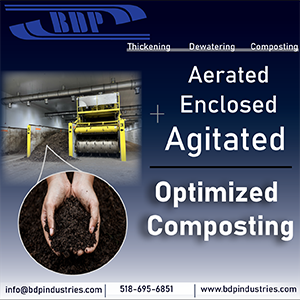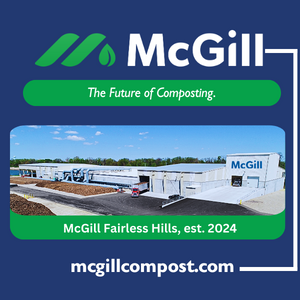Top: Infographics courtesy Institute for Local Self-Reliance
The Institute for Local Self-Reliance (ILSR) has a talent for creating infographics that are packed with information, easy to follow, and creatively illustrated. The latest, released in March, zero in on Big Waste’s control of America’s trash stream and conversely, how wasted food can be used to grow local community wealth. “Our new infographics explain Big Waste’s profitable and polluting playbook and how local composting and wasted food reduction offers a circular alternative that turns waste into local wealth,” explains Jordan Ashby, Advocacy and Communications Lead with ILSR’s Composting for Community Initiative. Four companies — WM, Republic Services, Waste Connections and GFL Environmental — control about 60% of waste volume that gets disposed in landfills, a dramatic shift from the thousands of independent local haulers that existed in the mid 20th century. The billions of dollars flowing to those companies are not going back into local economies, and particularly are not being invested into the communities harmed by landfills and incinerators, notes ILSR. “Local governments have the power to reclaim their discarded materials through investing in policies and contracts that prioritize local resource management through composting, recycling, and wasted food prevention and rescue. By diverting material locally, communities can reroute profits from the biggest corporations and retain benefits in and for their local area. Investing in a local, circular economy creates a community playbook that keeps dollars and resources local, rather than lining the pockets of Big Waste.”














